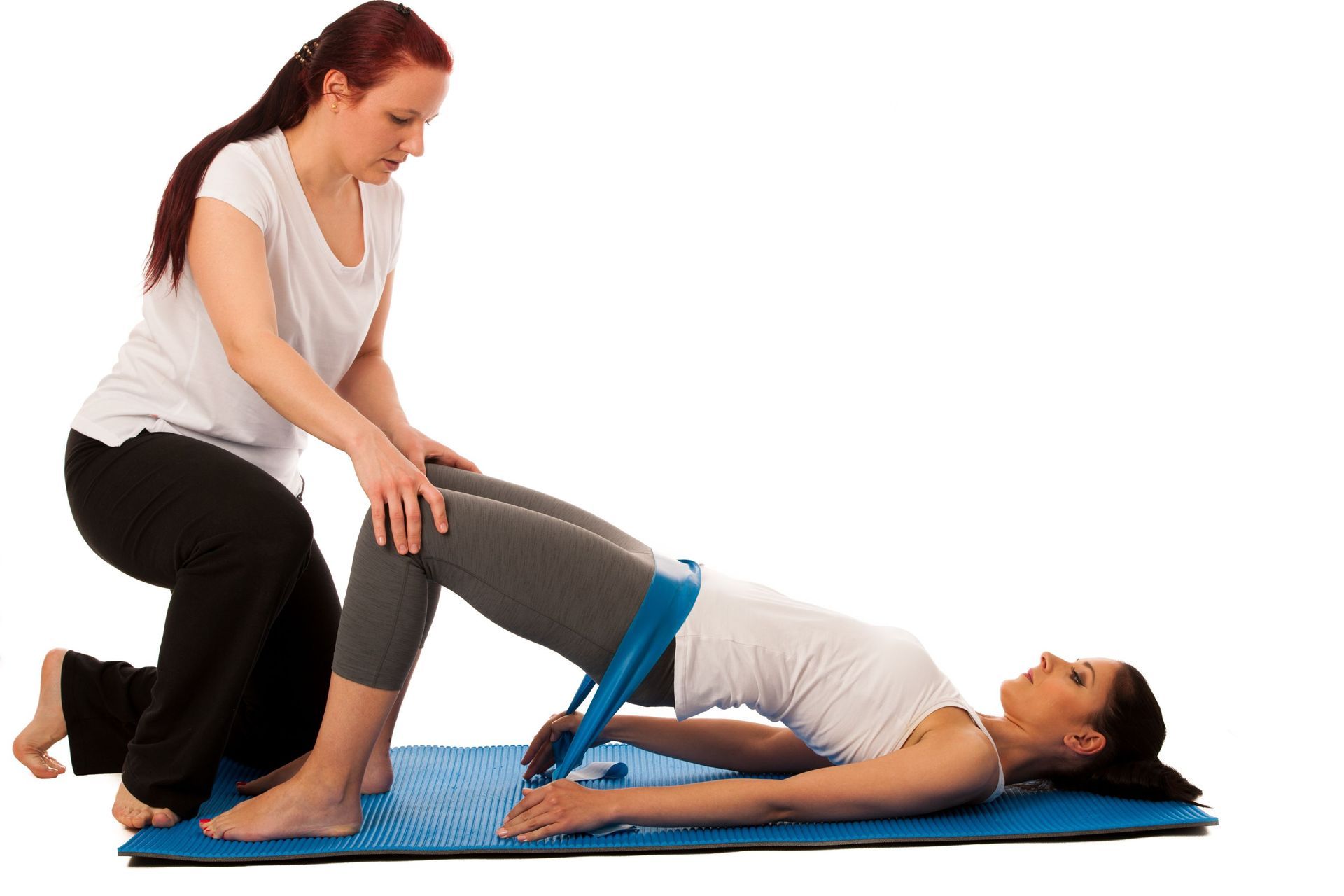Lumbar Stabilization
Lumbar stabilization
How Does Lumbar Stabilization Work?
A lumbar stabilization program will strengthen and reactivate spinal muscles, allowing you to regain control of your spinal movement. Lumbar Stabilization Begins with the Activation and Control of Four Groups Of Muscles: Internal Oblique Abdominal Muscles - the middle layer of abdominal muscles that helps protect your trunk when you rotate.
Transverse Abdominals
A girdle of muscles wrapping around from your lumbar spine to the front of your belly. It normally contracts just before you move your arms or legs, but low back pain may delay this protection.

Multifidi
deep muscles found in your low back. They connect the backside of each vertebra to the vertebra above, and are important for controlling wobble between vertebrae. Fat may replace fibers in these muscles if muscles are not used for long periods.
Pelvic Floor Muscles
Muscles suspended from your pelvic area. They provide a floor for your abdominal cavity, and work with the transverse abdominal muscles to stabilize your spine.
What Comes Next?
Ask your doctor for a prescription for physical therapy. The physical therapist can work with your doctor to develop a plan tailored to your specific needs. He or she will evaluate your condition, identify your weak areas, and then set up a program specifically for you.
Who Needs Lumbar Stabilization?
Lumbar stabilization can help many people who suffer from low back pain (LBP). It can often both reduce pain and prevent further injury. It can also be used by anyone who wants to prevent LBP. As you move, specific muscles automatically contract to protect your spine. If you have LBP, this normal pattern is disrupted, and the muscles either contract late or not at all. If you have recently experienced new LBP, stabilization can help prevent further injury. If you are bothered by recurring LBP, stabilization can help control spine movement and reduce your pain. If you are suffering from long-lasting LBP, stabilization can reduce the sensitivity of your painful back and promote healthy spine movement.
What Are Lumbar Stabilization Exercises?
Lumbar stabilization exercises should be learned before traditional core-strengthening exercises to develop proper muscle activation and timing. Traditional core-strengthening exercises may not improve spine control, and if done incorrectly, can even cause or increase low back pain.

A Lumbar Stabilization Program Begins with Five Basic Exercises:
- Pelvic Floor Muscle (PFM) Activation: You tighten and lift the PFM up into the pelvic floor area by contracting the muscle, but you should stop short of maximum contraction. It should feel like you are trying to stop the flow of urine or stop a bowel movement.
- Abdominal Drawing-in Maneuver (ADIM): You pull your belly button up and in toward your diaphragm. This helps return the transverse abdominis muscle to its original role.
- Abdominal Bracing: While continuing to breathe, you tighten all of your stomach muscles as though you are preparing to be punched in the belly.
- Hip Extension-and-Hold: You assume a position on your hands and knees. Then while keeping your trunk straight and one knee bent, you lift the other leg up behind you.¹
- Bridging: You start by lying on your back with your feet on the mat and your knees bent. You then do the ADIM, and while holding it, raise your buttocks off the mat. Your buttocks should clear the mat, but your back should not be arched." This exercise activates the internal oblique abdominal muscles. Do not allow your pelvis to rock to the front or the back. ¹2 Hold each position for 3 to 5 seconds, and then relax. Begin by repeating each exercise 10 to 15 times.
When Do I Do the Exercises?
You should start doing these exercises as soon as you can, but only if they do not increase your pain. After mastering the exercises, you can use them during your daily activities. Tighten your transverse abdominis and pelvic floor muscles, for example, whenever you move from sitting to standing, or when you reach for something, or when you push or lift. Concentrate on good form. It will soon become automatic. Also avoid doing anything that puts extra stress on your back. This includes bending and twisting, and any other movement that puts stress on your back for long periods of time.

